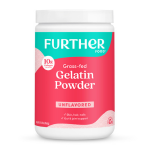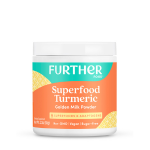Are You Skinny Fat? Why It Can Be Worse Than Being Obese

“Fat” is an enormous issue in this country. According to the Centers for Disease Control (CDC), 35% of Americans can be classified as obese and a whopping 70% of Americans are overweight. Being overweight or obese can increase your risk for a multitude of additional health problems including stroke, some cancers, heart disease, and depression. It can also seriously diminish quality of life.
But what about “skinny fat?” It may frighten you to hear that we can suffer all these problems, even if we’re “normal” weight or underweight. In fact, about 25% of the remaining 30 percent of those who don’t fall into the overweight or obese categories are what I call “skinny fat,” and they can still have diabesity- a term I coined to describe the spectrum of imbalance ranging from mild insulin resistance to pre-diabetes to full-blown type 2 diabetes. Health repercussions for the “skinny fat” can be even more dangerous than being overweight or obese. You might be wondering how this is even possible. Let me explain this phenomenon.
The “TOFI” Epidemic
We all know some people who can eat whatever they want and stay thin. You might even be jealous that they can eat as much junk food and dessert as they want, but never have to worry about their weight. Unfortunately, the health consequences for these people might be a lot worse than you could imagine. Many of these people are “skinny fat,” a term that refers to people who do not have enough muscle tone, or are “underlean” instead of “overweight” and have extra visceral fat around the abdomen. In other words, these people are thin on the outside and fat on the inside, or TOFI. Dr. Jimmy Bell coined this acronym to describe people who are thin but unhealthy. These skinny-fat people have a low body mass index (BMI) but very little muscle. Although their weight seems totally normal, in the inside, however, diabesity is causing all sorts of dangerous problems. TOFIs have the metabolic features of a pre-diabetic obese person: low muscle mass, inflammation, high triglycerides, low good cholesterol, high blood sugar, and high blood pressure.
Why is skinny-fat more dangerous than overweight? It comes down to the fact that, unlike overweight people, skinny-fat people often aren’t aware they can suffer the same health consequences. Unfortunately, TOFIs often go unnoticed, making this a major national health concern. Currently there are no national screening recommendations, no treatment guidelines, no approved medications, and no reimbursements to health care providers for diagnosing and treating anything other than full-blown diabetes. If you fall outside that category, where you are pre-diabetic or otherwise heading down the diabesity highway – and a lot of people do, including TOFIs – then doctors don’t normally delve deeper. The TOFI problem, then, continues to escalate.
Full disclosure: I was once a TOFI.
I used to eat Grape Nuts and ice cream for breakfast. When I was a kid in the 1970s, I would come home from school and eat a huge bowl of ice cream and with loads of cookies on top. When I was 18, I became a vegetarian and thought giant cookies made with whole wheat flour, chocolate chips, honey, and nuts were a health food. That was the low-fat 80s, when honey, maple syrup and sugar were health foods. As an adult, I continued my love affair with sugar and carbs. I made my own bread and pizza dough and ate pasta and ice cream most nights.
I constantly craved sugar and carbs. I didn’t realize that they had hijacked my taste buds, brain chemistry, hormones, and metabolism. I didn’t realize that I was a food addict. And I was not alone. The average American eats 146 pounds of flour and 152 pounds of sugar per person, per year. When combined, that’s almost one whole pound a day for every man, woman, and child.
Here’s the thing. I was never really overweight (except about 10 pounds or so), but eventually I noticed that my body was changing, that I was getting a bit flabby. Aesthetics aside, I also got chronic fatigue syndrome. It was sugar (and a few other things) that threw my body into a tailspin. I had rashes from yeast overgrowth under my eyes and itching in places I would rather not mention. My stomach was bloated, and I couldn’t digest food. My muscles ached, and I had brain fog. I felt like crap.
Eventually, I realized that the “healthy” low-fat, high-carb diet I was on was making me sick and making me TOFI. Here’s what I did to turn things around.
Diet Comes First
The prescription for a TOFI is to become lean and healthy, and maintain an ideal weight. Pretty similar to the advice we give overweight people, right? That’s because we’re shooting for the same results. The first step is choosing and customizing an appropriate, healthy diet consisting of “whole” foods. Every meal should be comprised of a plethora of non-starchy vegetables (think green, leafy, cruciferous), four to six ounces of lean protein, and gluten-free grains (such as quinoa, black rice, and buckwheat) in their whole-kernel form. Also consider occasionally integrating nutrient-dense starchy vegetables such as sweet potatoes and winter squash; low-glycemic fruit such as apples, pears, berries, or pomegranate; and beans and legumes.
Healthy fats are the-- often unexpected-- key to weight stabilization. Furthermore, they promote skin health and overall wellbeing. Incorporate one serving of a healthy fat (e.g., ¼ avocado or 1 tablespoon extra virgin olive oil, walnut oil, sesame oil, extra virgin coconut butter, or nut or seed butter – such as almond or cashew) into each of your meals. And please, do not skip meals. Breakfast is extremely important.
Build muscle
Skinny fat people may look thin, but have very little muscle. This isn’t good. Why? Because it’s the ratio of fat to muscle that makes the biggest impact on health and metabolic balance. As we age, we naturally lose muscle tone, and strength training is crucial. If you incorporate strength training into your routine, you’re only doing yourself a huge favor. You’ll look better, feel better, reverse TOFI, and with that, reduce your risk for diabesity and various other repercussions. When considering integrating strength training into your daily physical activity, it’s important to think about variety. Try simply using your own body weight for training, stair climbing, push-ups, or squats. Lifting weights at the gym is another way to build muscle. Aim for 20 minutes of weightlifting two to three times per week. All of these exercises can help build, strengthen, and maintain muscle tone.
6 More Lifestyle Strategies to Combat TOFI
As discussed above, the recommended strategies and solutions for diabesity and TOFIs are almost identical. The basic idea involves giving your body the key components it needs to stay lean and healthy, without being over- or underweight. Diet and exercise aside, these six additional strategies can help you overcome TOFI and become your healthiest self. Here’s what you can do:
1. Be aware of food sensitivities and manage them accordingly. Food sensitivities can wreak havoc on the body by contributing to inflammation, thereby setting the stage for a multitude of symptoms including fatigue, headaches, and general malaise. Aside from sugary and added-sugar products, try to eliminate all gluten and flour-based products (including gluten-free goods) and dairy. And, just because a food is gluten-free doesn’t mean it’s healthy! Shoot for whole foods that are naturally gluten-free, like vegetables, fruits, beans, nuts and seeds, and lean animal protein.
2. Manage your stress levels. Stress adversely affects your health and psychological well being. Before your meals or any other time you need to mentally unwind, try my Take-Five Breathing Break.
3. Be mindful of hydration. Drinking clean, fresh, pure water — six to eight glasses a day— has many benefits. Adequate hydration also curbs hunger and can prevent fatigue.
4. Your sleep is important. Shoot for seven to eight hours per night. Lack of sleep or poor sleep is detrimental to your metabolism, causes cravings for sugar and carbs, increases hunger, and drives up your risk of heart disease, diabetes, and early death. To prepare yourself each night, create a sleep ritual such as a hot bath with Epsom salts and lavender that will help guide your body into a deep, healing night’s rest.
5. Take my foundation supplements. Research proves that taking a high-quality multivitamin can reduce inflammation and provide the essential nutrients your diet may lack. I also recommend combining omega 3 supplements with a diet that regularly includes wild-caught fish.
6. Keep tabs on your progress in a journal. Tracking your food intake every day, along with your exercise, sleep, symptoms, and “numbers” (including weight, waist size, and lab test results) can hold you accountable to your own goals you set. Acknowledging your feelings and experiences as you modify your lifestyle helps you to develop your self-awareness. Once you feel more in control of your mental and physical health, you will have a greater feeling a wellbeing and wholeness.
Wishing you health and happiness,
Mark Hyman, MD.
Learn how to incorporate healthy fats into your diet by reading Dr. Hyman’s Eat Fat, Get Thin Cookbook.
Register for Dr. Hyman’s Fat Summit II, launching on November 7, to hear 34 Experts discuss fat and disease.
Want to read more?
Are You Skinny Fat? Why It Can Be Worse Than Being Obese
What is Dr. Hyman Cooking Today? Discover His Easiest, Healthiest Fall Meal Plan (and Secret Pumpkin Cookie Recipe!)
Just Diagnosed with Fatty liver? Dr. Hyman Says Sugar, Not Fat, is Your Enemy!























